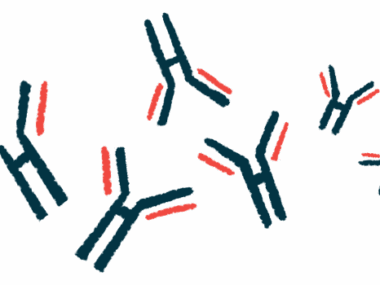System Marking 4 Stages of NMOSD, by Astrocyte Damage, Proposed
Written by |

A system that stages neuromyelitis optica spectrum disorder (NMOSD) based on damage to astrocytes — the specific brain cells that are attacked in NMOSD — was recently developed by a team of researchers in Japan.
While more work is needed, the system identifies four stages, largely based on astrocytopathy (damage to astrocytes), that are likely to reflect disease progression.
It was described in the study “Staging of astrocytopathy and complement activation in neuromyelitis optica spectrum disorders,” published in the journal Brain.
NMOSD is caused by the immune system attacking cells in the nervous system, namely start-shaped cells called astrocytes, which are important for supporting neurons (the nerve cells that send electrical signals). This immune attack is usually driven by the self-reactive antibodies known as AQP4-IgG.
NMOSD is characterized by symptoms like optic neuritis, inflammation of the nerves that connect the eyes to the brain, and myelitis, or inflammation in the spinal cord. This inflammation leads to a deterioration of myelin — the fatty substance that surrounds neurons and is important for sending electrical signals.
Optic neuritis, myelitis, and myelin deterioration are also commonly found in another autoimmune disease, multiple sclerosis (MS). Because of these similarities, NMOSD was long thought to be a form of MS.
However, there is a key difference in the biological mechanisms driving the disease: while NMOSD is caused by an immune attack on astrocytes, MS is not — the immune system in MS directly attacks the myelin sheath.
Despite this difference, NMOSD has long used a staging or classification system borrowed from MS. But MS-based staging isn’t really reflective of disease processes in NMOSD.
“There was no disease classification system unique and appropriate to [NMOSD]. So we decided to come up with one ourselves,” Yoshiki Takai, a study co-author with the department of neurology at Tohoku University, in Sendai, said in a press release.
Researchers examined brain tissue autopsy samples from eight people with NMOSD, all of whom were positive for AQP4-IgG. Autopsy samples from 11 MS patients were also examined for comparison.
Half of these people died while in acute stages of the disease, while the other four were stable and free of NMOSD relapses for at least a year prior to their death.
After analyzing the samples, the researchers outlined four stages of NMOSD based primarily on astrocytopathy — disease-related damage to astrocytes.
“The pathological staging of AQP4-IgG+NMOSD lesions we propose in the present study is expected to enable more accurate analysis of the time course of NMOSD lesions from the viewpoint of astrocytopathy,” the team wrote.
The four stages are called astrocyte lysis, progenitor, protoplasmic gliosis, and fibrous astrogliosis. According to the researchers, each likely represents a different stage in how the disease progresses over time. For example, astrocyte lysis — characterized by profound astrocyte death — was predominantly found in the individuals who died while in acute disease stages.
The other three represent stages at which the astrocytes began to recover from the acute injury, and associate with subacute or chronic forms of the disease. As each stage represents the sequence of temporal events in astrocyte damage, some lesions may have more than one stage.
The different stages also associate with characteristic immune-related features, such as the numbers of different kinds of immune cells in the brain, and activation of a part of the immune system called the complement cascade, which plays a role in killing astrocytes in NMOSD. Differences in damage to myelin among the stages were also noted.
“We identified four stages of astrocytopathy in AQP4-IgG+NMOSD, which we think is useful for understanding the unique temporal pathology [disease processes over time],” the researchers concluded.
The researchers noted that their study is limited by its small size, and by uncertainty about the duration of individual brain lesions in the samples.
They also noted a need to determine how NMOSD treatments affect these stages, and to “validate our method for staging astrocytopathy in AQP4-IgG+NMOSD in larger-scale studies.”






